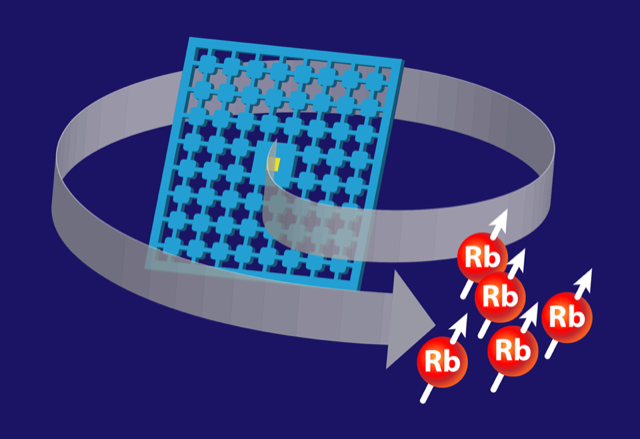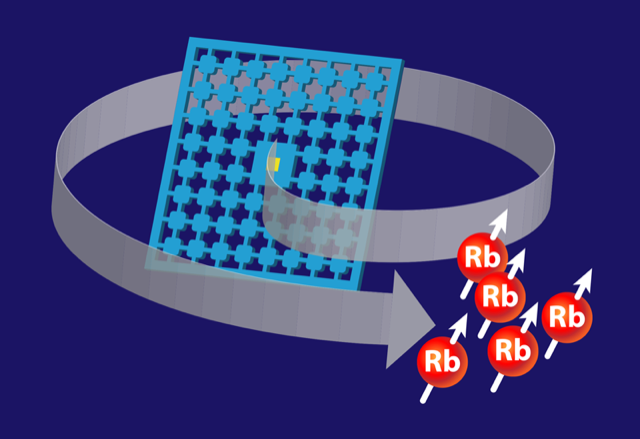Coherent Feedback Goes for a Spin
Modern electronic and photonic technologies are increasingly being designed in the quantum regime, where classical descriptions collapse. To operate these quantum-scale technologies, researchers are investigating ways to replicate or surpass the feedback control tools that have traditionally been wildly successful in automating technologies from self-driving cars to adaptive cardiac pacemakers. In classical feedback control algorithms, decisions about how to control a system are based on measurements of the system’s behavior. However, in the quantum world, these measurements can add noise to the system, rendering the control loop imprecise. Now, researchers from the University of Basel, Switzerland, report on an implementation of “coherent” feedback control that promises to remove the need for measurements [1]. The method could thus potentially be applied to quantum technologies without deleterious effects.
In our everyday world, it is possible to perform measurements of arbitrary precision on a physical device without disturbing the device’s operation. The measurement signal is processed with a controller, which applies feedback that drives the system’s behavior toward a desired goal. For example, an air conditioner uses the result of a temperature measurement, processed by a computer chip (the controller), to determine whether to increase or decrease its fan speed (the feedback).
Quantum—or coherent—feedback control methods have the potential to outstrip the performance limits of traditional classical feedback control methods. But in the quantum world, the act of measuring a system typically disturbs the system. Researchers are thus exploring whether they can create a controller that is itself quantum and replace the classical “measurement and feedback” steps with a coherent interaction between the system and the controller [2]. One set of systems in which they are looking to apply this “coherent feedback” method is optomechanical devices, wherein a mechanical oscillator couples coherently to an electromagnetic field. Though all-optical control methods exist for these devices, they are not effective for many optomechanical systems—particularly those with relatively low vibrational frequencies.
In 2010, researchers proposed that the motion of ultracold atoms could serve as a controller for such a method [3]. Importantly, that scheme permitted the atoms and oscillator to be spatially separated (unlike related proposals, e.g., Ref. [4]), a crucial requirement for modular quantum technologies, where the components of the system might be housed in different rooms or even cities—as required, for example, for a quantum internet.
Now, after a decade of improvement [5–10], the University of Basel team headed by Philipp Treutlein has achieved truly coherent feedback control of a hybrid atom-optomechanical system [1]. Their micromechanical device is a miniaturized membrane, 1 mm wide and 50 nm thick, that is perforated with holes in a pattern that suppresses damping of its vibrations. The controller is a cloud of approximately rubidium (Rb) atoms held in an optical trap. Unlike previous implementations, which used the atoms’ center-of-mass motion as the control degree of freedom, Treutlein and his colleagues use the atoms’ net spin. This change was key to their success; it is much easier to manipulate spin than motion.
In their demonstration, a laser beam mediated the interaction between the system and the controller. Small fluctuations of the atoms’ net spin modulated the laser light’s amplitude as it passed through the atoms. The modulated light then reflected off the membrane, acquiring a position-dependent phase shift and simultaneously pushing against the membrane through radiation pressure. Finally, the reflected light interacted with the atoms again, applying a phase-dependent torque to their spins. This coupling scheme allowed the Rb atoms to control the motion of the mirror despite an 8-orders-of-magnitude difference in mass.
To demonstrate the superior performance of coherent feedback, the team cooled the membrane’s motion using the atoms. This action was achieved by coupling the membrane’s vibrational energy into the atoms and then applying optical pumping, a process that efficiently removes energy from the spins. Continuous pumping, equivalent to a classical measurement-based feedback method, resulted in the membrane’s oscillations being cooled to around 216 mK in . Moving to a coherent scheme halved the required time. The key was periodically switching on and off the optical pumping. This resulted in efficient, coherent transfer of mechanical energy to the spins during the “off” times. Strong pumping then removed the energy before it had a chance to leak back into the membrane, which could happen during continuous pumping.
In my opinion, this demonstration represents a clear advance in our ability to perform coherent feedback control of a quantum system. The spin and membrane can be separated in space, allowing for modular device designs. Spin oscillators also have long intrinsic coherence times, permitting greater freedom in the design of coherent feedback control schemes. Going forward, it will be particularly interesting to investigate the effects of time delays, which can be modified by changing the optical path length between the membrane and atoms, and to determine the effectiveness of control protocols that leverage quantum resources such as spin squeezing.
References
- G.-L. Schmid et al., “Coherent feedback cooling of a nanomechanical membrane with atomic spins,” Phys. Rev. X 12, 011020 (2022).
- S. Lloyd, “Coherent quantum feedback,” Phys. Rev. A 62, 022108 (2000).
- K. Hammerer et al., “Optical lattices with micromechanical mirrors,” Phys. Rev. A 82, 021803 (2010).
- H. Ian et al., “Cavity optomechanical coupling assisted by an atomic gas,” Phys. Rev. A 78, 013824 (2008).
- A. Jöckel et al., “Sympathetic cooling of a membrane oscillator in a hybrid mechanical–atomic system,” Nat. Nanotechnol. 10, 55 (2014).
- S. Camerer et al., “Realization of an optomechanical interface between ultracold atoms and a membrane,” Phys. Rev. Lett. 107, 223001 (2011).
- D. Hunger et al., “Coupling ultracold atoms to mechanical oscillators,” C. R. Phys. 12, 871 (2011).
- B. Vogell et al., “Cavity-enhanced long-distance coupling of an atomic ensemble to a micromechanical membrane,” Phys. Rev. A 87, 023816 (2013).
- B. Vogell et al., “Long distance coupling of a quantum mechanical oscillator to the internal states of an atomic ensemble,” New J. Phys. 17, 043044 (2015).
- T. M. Karg et al., “Light-mediated strong coupling between a mechanical oscillator and atomic spins 1 meter apart,” Science 369, 174 (2020).





